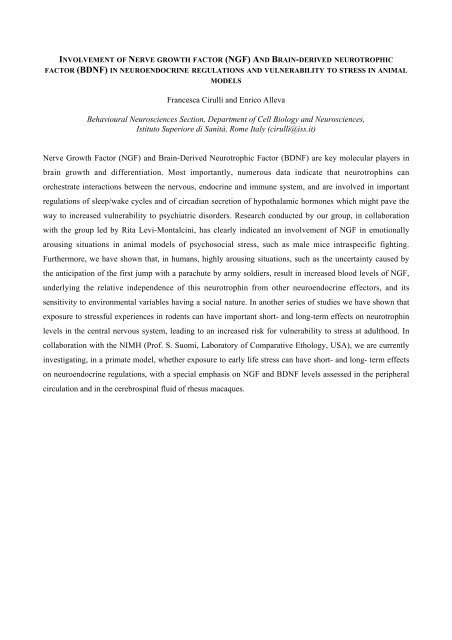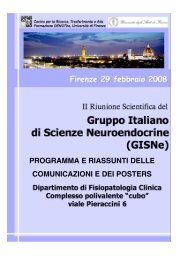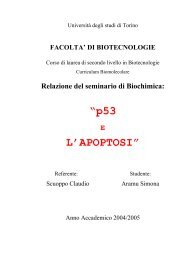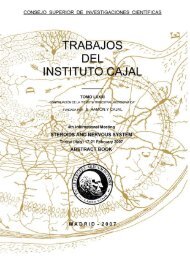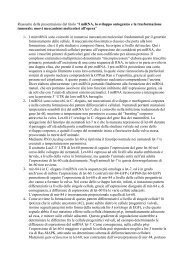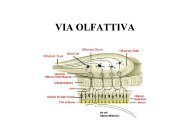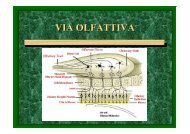GISNe - Anatomia, Farmacologia e Medicina Legale
GISNe - Anatomia, Farmacologia e Medicina Legale
GISNe - Anatomia, Farmacologia e Medicina Legale
Create successful ePaper yourself
Turn your PDF publications into a flip-book with our unique Google optimized e-Paper software.
INVOLVEMENT OF NERVE GROWTH FACTOR (NGF) AND BRAIN-DERIVED NEUROTROPHIC<br />
FACTOR (BDNF) IN NEUROENDOCRINE REGULATIONS AND VULNERABILITY TO STRESS IN ANIMAL<br />
MODELS<br />
Francesca Cirulli and Enrico Alleva<br />
Behavioural Neurosciences Section, Department of Cell Biology and Neurosciences,<br />
Istituto Superiore di Sanità, Rome Italy (cirulli@iss.it)<br />
Nerve Growth Factor (NGF) and Brain-Derived Neurotrophic Factor (BDNF) are key molecular players in<br />
brain growth and differentiation. Most importantly, numerous data indicate that neurotrophins can<br />
orchestrate interactions between the nervous, endocrine and immune system, and are involved in important<br />
regulations of sleep/wake cycles and of circadian secretion of hypothalamic hormones which might pave the<br />
way to increased vulnerability to psychiatric disorders. Research conducted by our group, in collaboration<br />
with the group led by Rita Levi-Montalcini, has clearly indicated an involvement of NGF in emotionally<br />
arousing situations in animal models of psychosocial stress, such as male mice intraspecific fighting.<br />
Furthermore, we have shown that, in humans, highly arousing situations, such as the uncertainty caused by<br />
the anticipation of the first jump with a parachute by army soldiers, result in increased blood levels of NGF,<br />
underlying the relative independence of this neurotrophin from other neuroendocrine effectors, and its<br />
sensitivity to environmental variables having a social nature. In another series of studies we have shown that<br />
exposure to stressful experiences in rodents can have important short- and long-term effects on neurotrophin<br />
levels in the central nervous system, leading to an increased risk for vulnerability to stress at adulthood. In<br />
collaboration with the NIMH (Prof. S. Suomi, Laboratory of Comparative Ethology, USA), we are currently<br />
investigating, in a primate model, whether exposure to early life stress can have short- and long- term effects<br />
on neuroendocrine regulations, with a special emphasis on NGF and BDNF levels assessed in the peripheral<br />
circulation and in the cerebrospinal fluid of rhesus macaques.


